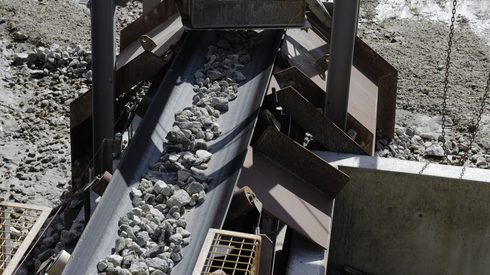While EU steel production continues to drop due to climbing energy costs, demand issues have taken center stage away from any supply concerns, sources said.
“Which will have the higher influence in Europe this winter,” an analyst asked, “higher fuel costs curtailing smelter output in steel supply, or higher fuel costs curbing consumer demand so much that economies fall into deep recession, cutting steel demand?”
Most European energy experts and economists expect demand to carry more weight in the coming months.
The result in the short term will be predominantly Asian steel producers making up for any European steel shortfalls, sources said.
“There is plenty of spare capacity globally, and Asian countries would be a more cost-competitive option than the US for steel imports,” Fastmarkets’ European analyst Paolo Frediani said. “Besides, high energy prices in Europe will affect steel-consuming sectors as well as the steel industry…we expect European domestic [hot-rolled coil] prices to remain lower than US domestic HRC prices this coming winter, despite record-high energy costs.”
European steel buyers have already started to shift their import focus to Southeast Asia, with Indonesia committing to send steel to Germany, Poland and Turkey.
“I would say that while there may be a chance for US exports to Europe, I doubt it will be substantial due to the difference in price between the US and the rest of the world,” Fastmarkets’ US analyst Kim Leppold said. “US steel prices, compared to global competitors like Turkey, South Korea, Asia or Latin America remain high and less likely to compete for sales.”
EU steel output in August was down by 13.3% year on year to 9.7 million tonnes, according to the latest figures from the World Steel Association. In the category that includes the United Kingdom and Turkey, production totaled 3.6 million tonnes in August, down by 18.6% year on year.
US producers, who have been experiencing similar high energy costs, albeit on a much smaller scale, have noted EU production declines and have considered exports as a possibility, sources said.
“There’s no way of knowing what may happen in Europe if [Russian president Vladmir] Putin shuts off the gas flow,” a US producer source said. “Steel production over there would definitely be impacted. Maybe they turn to us to fill in some holes.”
Exports by the numbers
People considering exporting material are trying to find opportunities, but the US has never been a massive steel exporter.
Over the past 10 years, US steel exports have ranged from a high of 13.1 million tonnes in 2012 to a low of 6.4 million tonnes in 2020.
Canada and Mexico have been the only two countries where the US has exported millions of tonnes per year instead of thousands of tonnes per year.
The US exported 3.71 million tonnes of steel to Canada in 2021 and 3.69 million tonnes to Mexico. China (43,431 tonnes), Brazil (36,239 tonnes) and South Korea (31,895 tonnes) were the next three most-significant US steel destinations.
In Europe, the United Kingdom (17,426 tonnes), Italy (17,203 tonnes) and Germany (12,564 tonnes) received the most shipments of US steel in 2021.
Even if EU steel mills are forced to significantly cut back on production due to a decrease in Russian gas imports, sources said steel exports from the US won’t increase dramatically because of a lack of demand.
Fastmarkets calculated its daily steel HRC index, domestic, ex-works Northern Europe at €683.75 ($673.49) per tonne on Tuesday October 18
Fastmarkets’ daily steel hot-rolled coil index, fob mill US was calculated at $36.62 per hundredweight ($732.40 per short ton) on Monday October 17.





